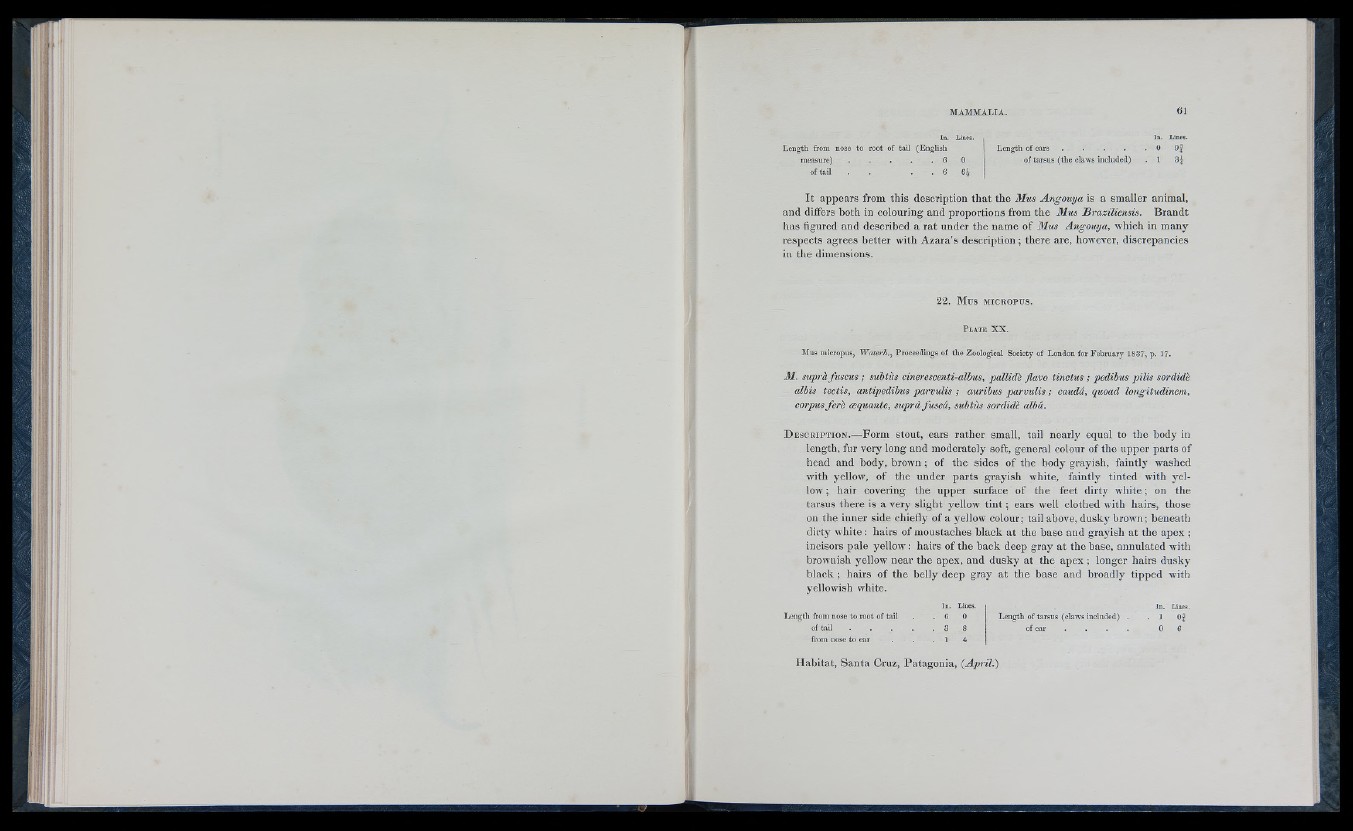
1 4
I:
In, Lines,
from nose to root of tail (English
measure) . . . . . C O
of tail . . . . 6 6A
In. Lines.
Length of e a r s .................................................. 0
of tarsus (the claws included) . 1 3^
It appears from this description that the Mus Angouya is a smaller animal,
and differs both in colouring and proportions from the Mus Braziliensis. Brandt
has figured and described a rat under the name of Mus Angouya, which in many
respects agrees better with Azara’s description; there are, how'ever, discrepancies
in the dimensions.
22. Mus MICROPUS.
Mus micropus, Waterh.,
P late X X .
of the Zoological Society of London for February 1837, p. 17.
M. suprà fuscus ; subtùs cinerescenti-albus, pallidè flavo tinctus ; pedibus pilis sordidè
albis tectis, antipedibus parvulis ; auribus parvulis ; caudâ, quoad longitudinem,
corpus ferè oequante, suprà fuscâ, subtùs sordidè albâ.
D e s c r i p t i o n .—Form stout, ears rather small, tail nearly equal to the body in
length, fur very long and moderately soft, general colour of the upper parts of
head and body, brown ; of the sides of the body grayish, faintly washed
ivith yellow, of the under parts grayish white, faintly tinted with yellow
; hair covering the upper surface of the feet dirty w hite; on the
tarsus there is a very slight yellow tin t; ears well clothed with hairs, those
on the inner side chiefly of a yellow colour; tail above, dusky brown; beneath
dirty white : hairs of moustaches black at the base and grayish at the apex ;
incisors pale yellow : hairs of the back deep gray at the base, annulated with
brownish yellow near the apex, and dusky at the apex ; longer hairs dusky
black ; hairs of the belly deep gray at the base and broadly tipped with
yellow'ish white.
I.ongth from nose to root of tail
of tail
from nose to ear
In. Lines.
6‘ 0
3 8
In. Lines.
Length of tarsus (claws included) . . 1 Of
of ear . . . . 0 6
Habitat, Santa Cruz, Patagonia, {April.)